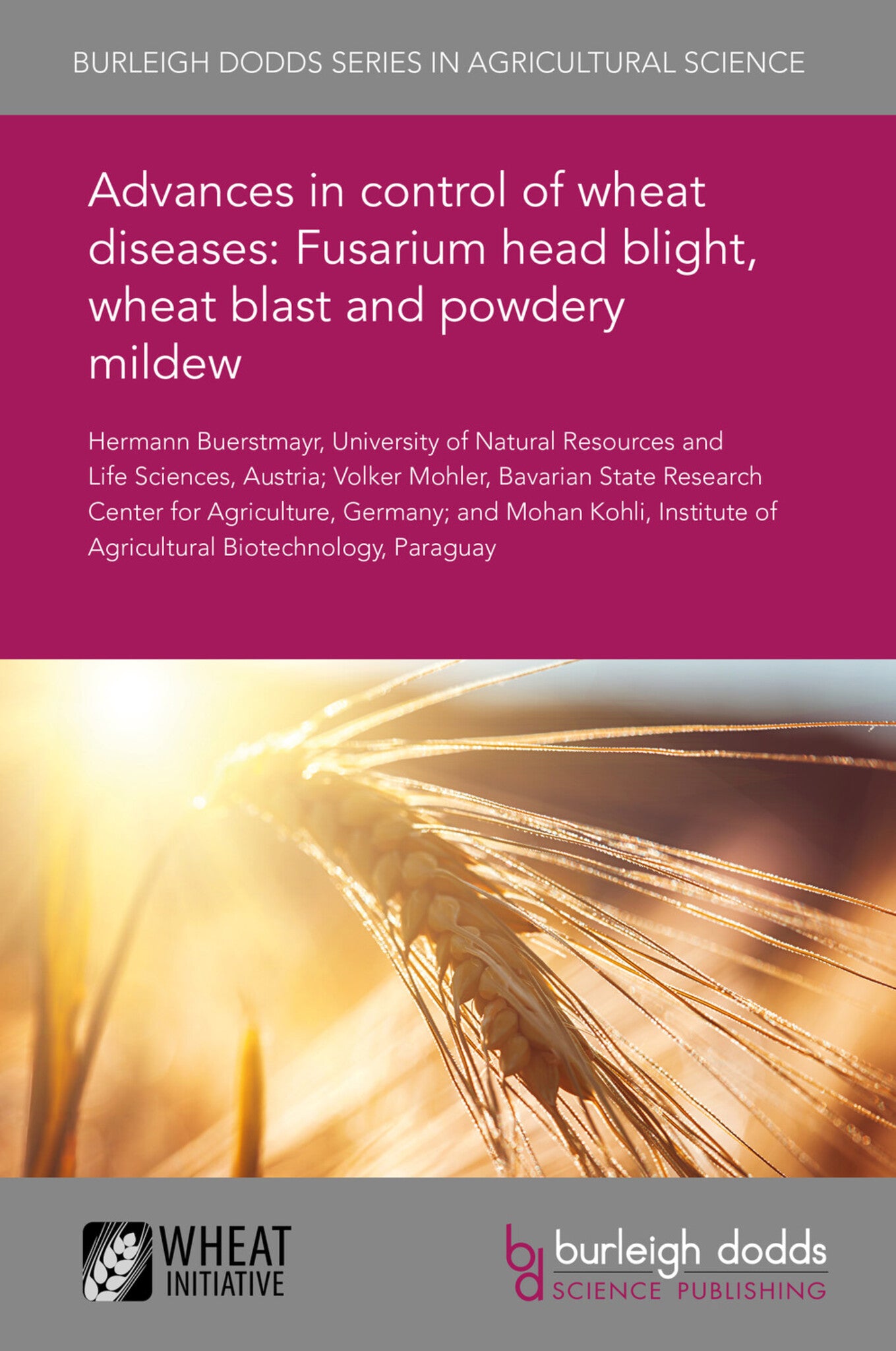We're sorry. An error has occurred
Please cancel or retry.
Advances in control of wheat diseases: Fusarium head blight, wheat blast and powdery mildew

Some error occured while loading the Quick View. Please close the Quick View and try reloading the page.
Couldn't load pickup availability
- Format:
-
31 July 2016

Fusarium head blight, wheat blast and powdery mildew are among the serious damaging diseases of wheat, which are caused by fungi of Ascomycota phylum. Integrated approaches are mandatory for efficient control of all three diseases. Control measures may either contribute to reducing the abundance of inoculum (particularly ascospores or conidia) or hamper infection and/or disease development should inoculum be present. This chapter provides insight into agronomic control measures of all three diseases, including adoption of resistant cultivars. Case studies of genomics-assisted resistance breeding are also discussed. For all three
diseases, in addition to genetic control, designing optimal integrated control strategies and refining real-time, site-specific decision support systems are essential.

TECHNOLOGY & ENGINEERING / Agriculture / General, Agricultural science, TECHNOLOGY & ENGINEERING / Agriculture / Agronomy / Crop Science, TECHNOLOGY & ENGINEERING / Agriculture / Agronomy / Soil Science, TECHNOLOGY & ENGINEERING / Agriculture / Sustainable Agriculture, TECHNOLOGY & ENGINEERING / Pest Control, Sustainable agriculture, Organic farming, Agronomy and crop production, Pest control / plant diseases

1 Introduction
2 Occurrence of Fusarium head blight, wheat blast and powdery mildew
3 Agronomic control measures
4 Chemical and/or biological control
5 Disease forecasting and decision support for farmers
6 Adoption of resistant cultivars
7 Genomics-assisted resistance breeding
8 Future trends and needs in research
9 Where to look for further information
10 References



